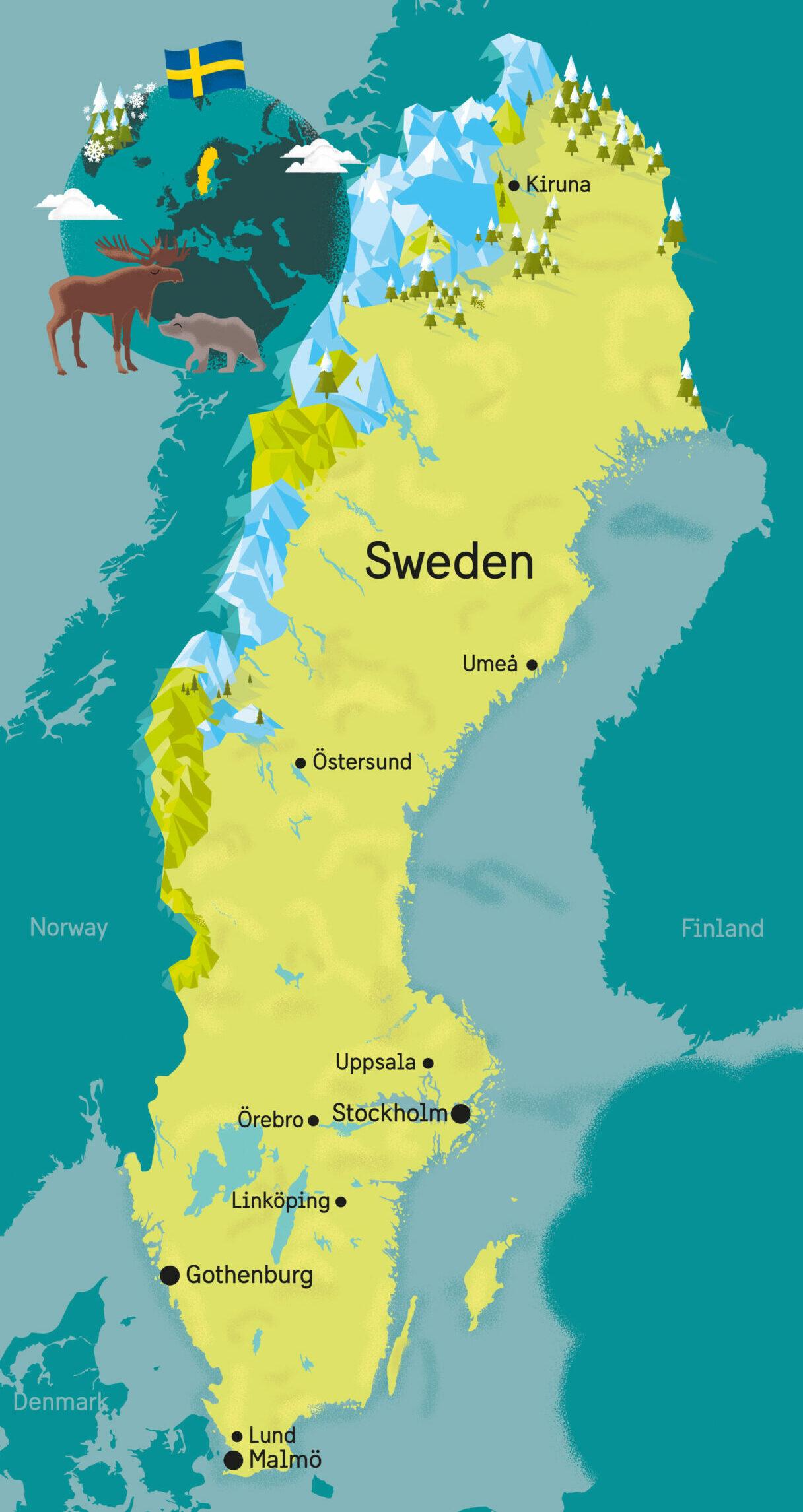Key facts about Sweden
Here are your key facts about Sweden, as an introduction.
Sweden key facts
Capital: Stockholm
Population: 10,551,707 people , 0.13 per cent of the world’s population
Life expectancy: Men 81.58 years , women 84.9 years
Language: Swedish (main language); and five official minority languages: Sami, Finnish, Meänkieli (Tornedalen Finnish), Yiddish and Romani Chib
Religion: The Church of Sweden is Evangelical Lutheran, but there are also many other religions and faiths in the country
National Day: 6 June
Sweden's government
Form of government: Constitutional monarchy, with parliamentary democracy – political power lies with the parliament and government; the monarch has ceremonial functions
Parliament: Called ‘riksdag’ – 349 members of parliament in a single chamber
Head of state: His Majesty King Carl XVI Gustaf; heir to the throne is Crown Princess Victoria
Education and work in Sweden
Education: Ten years of compulsory schooling, but most students continue to the three-year upper secondary school. Around one-third go on to higher education at universities and colleges throughout Sweden
Working hours: Standard work week is 40 hours, minimum paid holiday allowance is 5 weeks (25 working days)
Employment rate (20–64 years): Men: 71.8% ; women: 67.0% ; total: 69.4%
Sweden's geography and nature
Longest north–south distance: 1,572 km
Longest east–west distance: 499 km
Land area: 410,000 sq km
Total area: 528,447 sq km, the fifth largest country in Europe and roughly the same size as California
– Forests: 63% (69 % of the land area)
– Lakes and rivers: 9%
– Marshland: 6.5%
– Agricultural land: 7%
– Grasslands: 7%
– Urban and industrial land: 3%
– Exposed rock and mountains: 4.5%
Highest mountain: Kebnekaise (2,099 m)
Biggest lake: Vänern (5,650 sq km)
Number of lakes larger than 100m x 100m: 95,700
Sweden's biggest cities and their population:
- Stockholm: 988,943
- Göteborg: 604,616
- Malmö: 362,133
Number of national parks: 30
Time zone: GMT +1
Money and trade
Currency: 1 krona (SEK) = 100 öre ≈ EUR 0.095
GDP: SEK 6,295 billion (2023)
Sweden's most important export goods: Vehicles and machines, pharmaceuticals/chemicals, electronics, minerals, wood products, energy, foods, shoes and clothes
Source: Statistics Sweden
Contacting Sweden
Calling code: +46
Internet code: .se
Useful links
scb.se – Statistics Sweden, official statistics about Sweden
ekonomifakta.se – facts related to Swedish economy
ec.europa.eu/eurostat – Eurostats, official statistics about the EU
data.worldbank.org – World Bank Open Data, official statistics about the world
